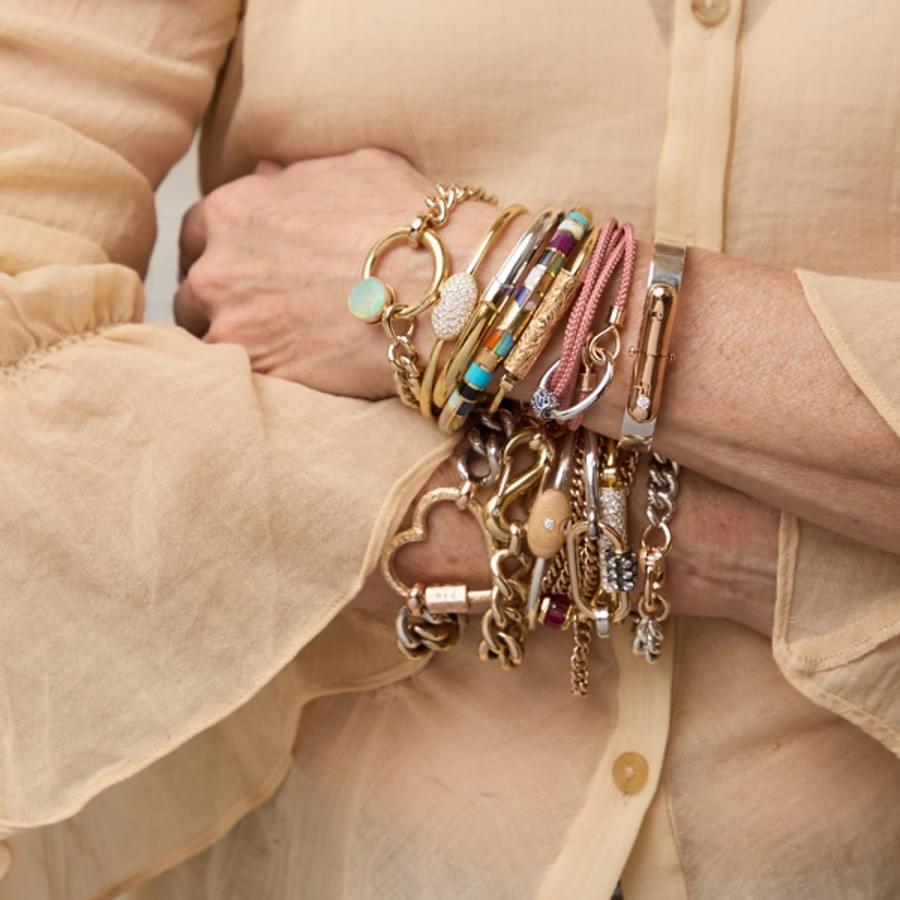
With the abundance of tennis bracelets on the market, consumers might start thinking if they’ve seen one, they’ve seen them all.
We, of course, know this couldn’t be further from the truth. Countless brands and designers have proved the strength of an artist’s point of view—their work and design choices accomplish the seemingly momentous task of differentiating their jewelry from similar styles.
Elements such as gemstone cuts and prongs, metal texture, and link style can showcase a unique designer aesthetic, but one final detail, the one providing the all-important function of securing a piece of jewelry around the neck or wrist, might speak the loudest of all. That is the clasp.
A signature clasp is a storied tradition among jewelers. The iconic “Return to Tiffany” could be considered one; there’s also David Yurman’s cabochon-accented toggle and Marla Aaron’s Lock collection. They’ve turned the most important—though not particularly sexy—element of jewelry design into the most exciting part, giving the clasp a spotlight it well deserves.

An assortment of Marla Aaron’s signature Locks
“The clasp is everything—it is the story, it is beauty, it is functionality, and there are so many ways to iterate it,” Aaron tells me via FaceTime, where I was delighted to get a glimpse of some of her signature creations (there’s a lot of them!).
Aaron has built a renowned brand on her signature Locks, and she thinks of each more as a connector than solely a clasp—functioning as a closure or as an accent or charm holder. The Locks are the jumping-off point to the entire Marla Aaron line, and the brand offers them in many different styles. That means a jewelry collector can switch up their Locks. This signature piece has been frequently imitated, but those in the know will always recognize—and prefer—a Marla Aaron Lock when they see one.
Signature clasps do seem to gaining popularity among younger brands as a way to put their own identifiable stamp on things. But in an industry bustling with creators, how can an independent brand or designer make their mark with a single detail like a signature clasp? “You have to be focused on what you’re good at,” says Aaron. “We are very focused on functional pieces—we stay very much in our lane, expanding upon it but with a deep sense of focus.
“I think the most important thing is not only to focus on what you’re good at but focus on excellence—less is more. And stay away from trends.”
Here is just a sampling of jewels from designers trying to define themselves through details like the clasp (others are working on the genius mechanisms of hiding clasps entirely). When form meets function, and form looks like these pieces, they have truly delivered.
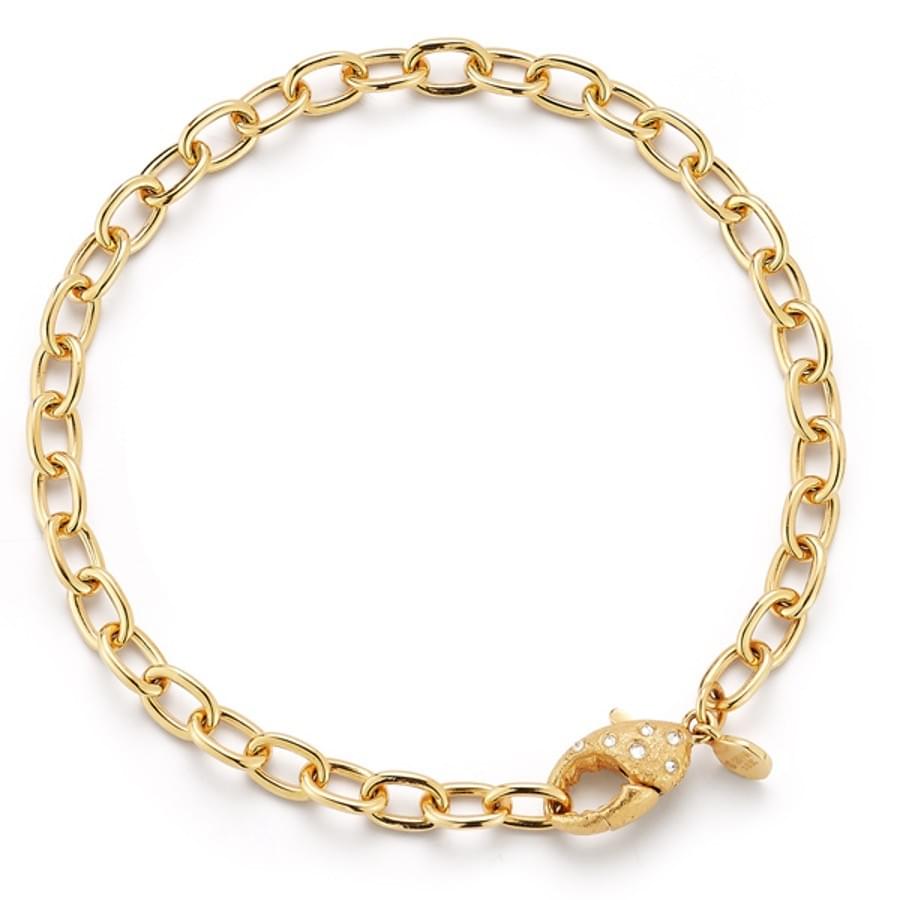
Lobster Clasp charm bracelet in 18k yellow gold with diamonds, $4,700; Renna
Renna, a brand whose fine yet whimsical jewels are often inspired by founder Renna Brown-Taher’s childhood by the sea, recently gave its patented Lobster Clasp an upgrade, setting it with inverted diamonds for a tactile, barnacle-esque look.
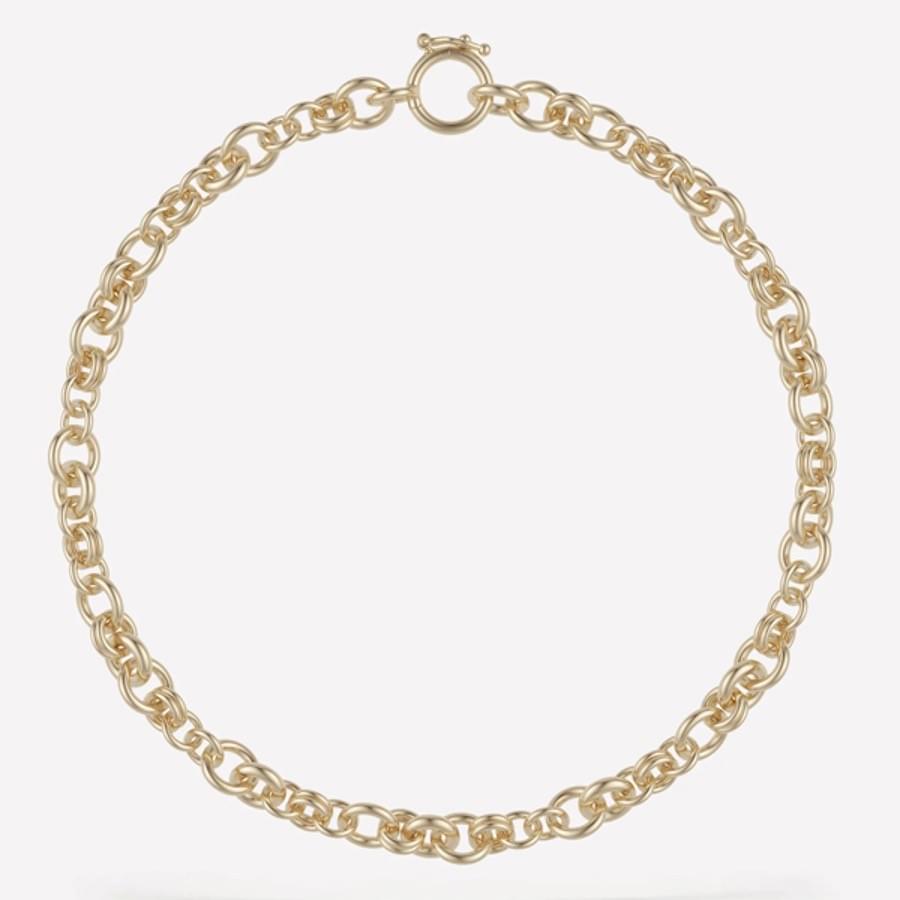
Helio bracelet in 18k yellow gold, $4,600; Spinelli Kilcollin
Spinelli Kilcollin’s perfectly circular clasp on its bracelets and necklaces might seem subtle, but its design is ingenious: It somehow disappears into the links and stands out at the same time.
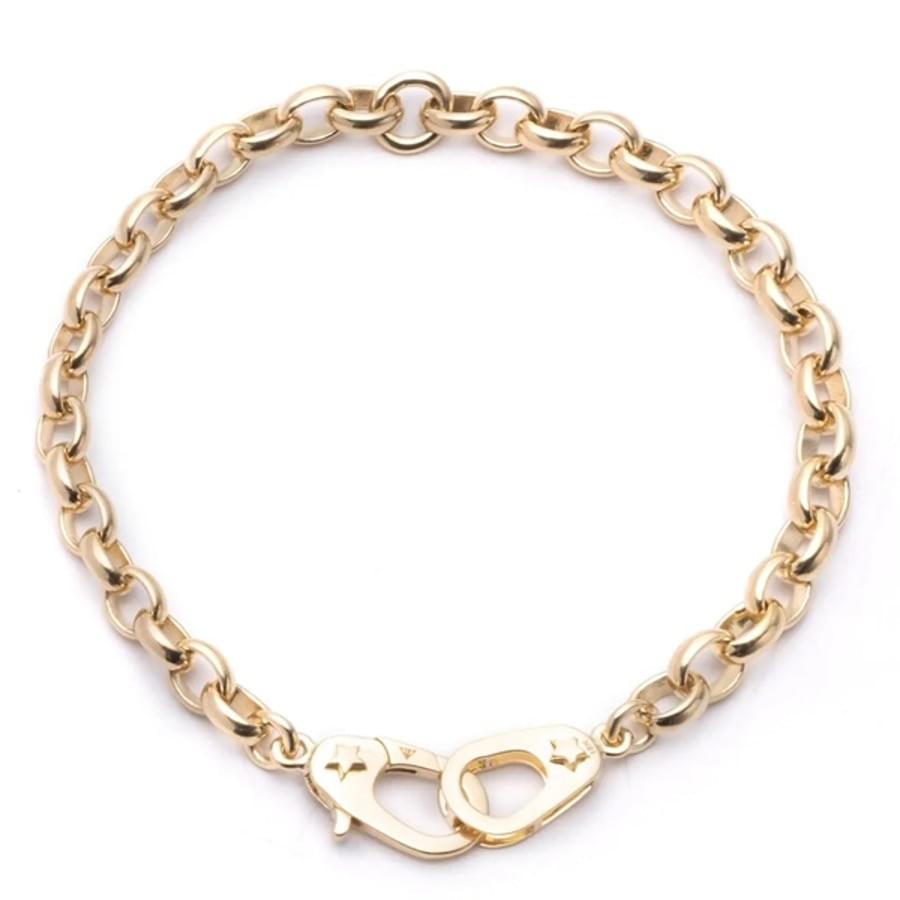
Heavy Belcher bracelet with Sister Hook in 18k yellow gold, $4,050; Foundrae
Foundrae’s brand’s DNA is infused into two signature items: the Sister Hook clasp, which can be used as a closure or a charm holder, and the Annex link, a connector that allows either an extension of necklaces and bracelets or charm attachment.
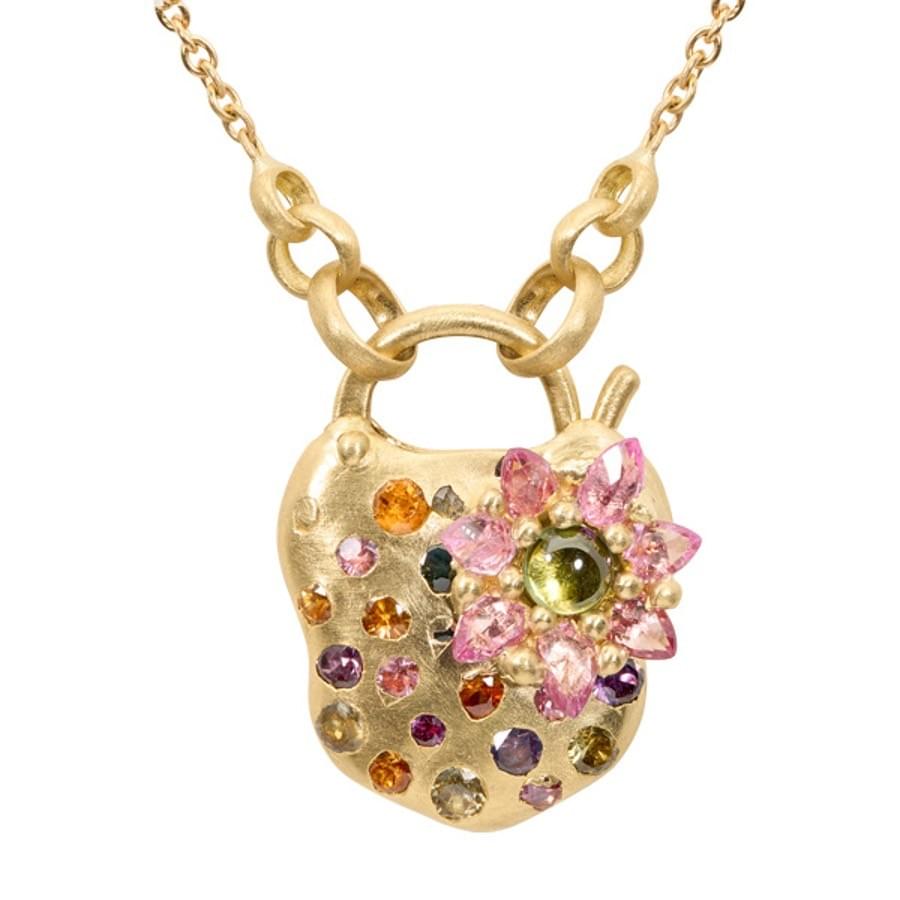
Small Blossom Padlock in 18k yellow gold with sapphires, $5,270; Polly Wales
Much like Marla Aaron’s Locks, Polly Wales’ Padlocks offer the option of serving as clasp or adornment, as a charm catcher or even an accent on a hoop or huggie earring.
Top: Marla Aaron makes a vast collection of connectors, pictured here with enviable stacks of bracelets. (Photo via Marla Aaron)
